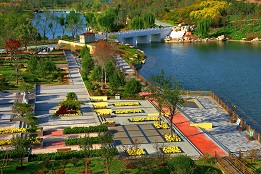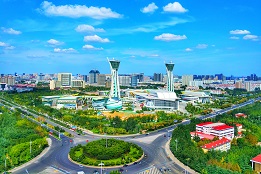Locals get a lift from residential upgrading
Apart from adding more green space, the zone has also made investments in associated infrastructure like the city lighting system, intelligent parking lots and pedestrian sidewalks.
Ronghuali, an 829-meterlong street in the zone, has become a popular attraction because of its international style and is admired for its fashion stores.
"I know Kuanhouli in Shandong's capital Jinan, the Wide and Narrow Alleys in Chengdu in Sichuan province and Beijing's Taikoo Li Sanlitun and 798 Art Zone. I love their atmosphere," said Weifang resident Xuan Xuan.
"I never expected our zone to have that kind of street."
In upcoming years, there will be more cultural and leisure tourism destinations in the zone to satisfy the different tastes and needs of its residents.
Officials said their interests always come first in the zone, and its administration has paid a great deal of attention to helping residents to meet various needs, including healthcare, care of the elderly, education, employment and improving living conditions.
It also built some subdistrict-level and village-level museums to conserve documents containing family trees, social history and anecdotes that have cultural and historical value, as high-rise apartments gradually replace the old shanty towns in the rural area.
Officials said those museums were giving the young generations opportunities to learn more about the city’s traditions and culture. They added that government spending on improving the living conditions for residents in the zone increased 22.2 percent year-on-year in 2017.
The zone has embarked on 59 projects to improve conditions since 2016 with a total investment of 3.2 billion yuan.
Zhuang Jian contributed to this story.




